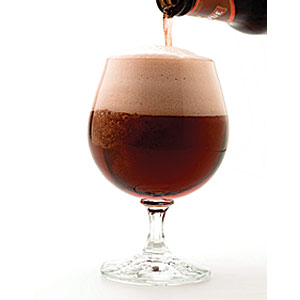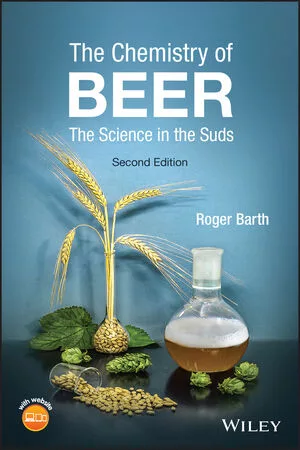Specialty malts add variety to craft beer
Micro-malting industry incorporates local ingredients, sustainability
In the craft beer segment, hops tend to steal the spotlight when it comes to formulation. They’re prominent within India Pale Ales (IPAs), which is the segment’s top-selling style, according to Information Resources Inc., Chicago. Plus, they’re even measured in most beers by International Bitterness Units (IBUs), which assess the bitterness of a beer as provided by the hops that are infused during brewing.

|
However, in order to help balance out hop-forward beers like IPAs, brewers are turning to malts, says Jeff Milligan, North America commercial manager for Cargill Malt, a division of Cargill Inc., Minneapolis. Although malts might come off as more of a “sidekick” to hops for this reason, beer wouldn’t exist without them.
Standard or base malts are diastatic, which means that they contain active enzymes to self-convert their starchy centers into sugar for fermentation, which is necessary to brew beer, explains Dave Richter, division manager for the West with Briess Malt & Ingredients Co., Chilton, Wis. That’s why malts often are referred to as the heart and soul of beer, according to beverage ingredient suppliers.
Ingrained specialties
Malted barley represents the majority of malted cereal grain in the world; however, wheat and rye also are routinely malted for brewing, according to Briess. Standard malts account for approximately 80 percent of the malt used to produce craft beer because they contain the enzymes necessary for brewing beer, Richter says. However, the remaining 20 percent is made up of specialty malts, which oftentimes are nondiastatic, meaning they have no enzyme activity, he notes. Instead, they are utilized for their flavors and colors.
“Specialty malts are produced when the length of time, temperature or humidity of the three stages of the malting process — steeping, germination and drying — are adjusted to develop unique flavors and colors or distinctive functionality,” Richter says.
During the drying stage, for instance, these malts can be kilned, roasted or both to enhance the malts’ flavors and colors. Briess offers kilned rye and smoked malts, as well as roasted caramel and biscuit-style malts. Specialty malt flavors can range from intense malty to sweet caramel, biscuit, nutty, woody, coffee and chocolate, Richter says. However, malts that are kilned typically contribute a toasted caramel malt flavor, while roasted malts tend to contribute a sweet, caramel, very slightly roasted flavor, according to Cargill Malt. Colors can run the spectrum of golden to red to black, Briess’ Richter adds. Light roasting typically creates reddish hues, and dark roasting creates dark brown to black colors, according to Briess.
While hop-heavy beers like IPAs often contain no or very little specialty malts, beers such as Doppelbocks and Scotch ales are “malt bombs” that use large quantities of a variety of specialty malts, Richter says. Munich-style malts and caramel-style malts are two of the most widely used specialty malts, he adds. Cargill’s Milligan adds that Belgian malts are growing in demand along with the trend toward Belgian-style beers.
Malted and flaked ryes also are increasing in demand as both rye beers and rye whiskeys grow in popularity, he says. This partially reflects the craft distilling trend in which whiskey is driving growth and, therefore, increasing demand for malts, he notes.
Last summer, Briess launched a concentrated brewers wort (CBW) Rye malt extract, which was specially formulated using a blend of base, rye and caramel 40 malts, the company says.
In addition to their flavor and color impacts, malts can affect the mouthfeel of beer, Cargill’s Milligan adds.
“The mouthfeel of beer is tied directly to the alcohol and dextrin content of the beer, which are both malt-derived,” he says.
Logistically local
Sustainability also remains on many brewers’ minds, Milligan says. Therefore, some brewers are trying to source as many locally produced ingredients as possible. As a result, barley is being grown in non-traditional areas, which is attributing to the evolution of a small, new micro-malting industry, he explains.
This local movement also could help tackle logistical challenges, Milligan suggests.
“Most breweries and distilleries are not lucky enough to be near malthouses,” he says. “This causes logistical challenges both in cost and execution, especially in winter months.” For instance, rail freight delays due to rail performance have been significant challenges so far this year, he notes.
Nevertheless, as brewers continue to experiment with new beverage offerings, they’re continuously asking suppliers what new malts are available, which leads Briess to constantly research and develop new malts for the craft brewing segment, Richter says.
Cargill’s Milligan affirms this point, adding: “This increased demand for differentiation translates into increased demand for special ingredients. Brewers continually look for new and interesting malts, reaching far and wide to find new malts.”
With craft beer and spirits showing no signs of a slowdown, the demand for malts is trending upward, he says.
Looking for a reprint of this article?
From high-res PDFs to custom plaques, order your copy today!





